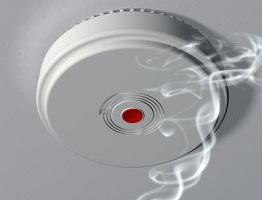New market research indicates that the smoke detector market is expected to grow from USD 1.31 Billion in 2015 to USD 2.52 Billion by 2022, at a CAGR of 9.2% during the forecast period. The smoke detector market is driven by factors such as Increasing support and initiatives from government bodies, and technological advancements and innovations in smoke detectors and their networking.
Within the report, entitled, “Smoke Detector Market by Power Source (Battery Powered, Hardwired With Battery Backup, Hardwired Without Battery Backup), Product (Photoelectric, Ionisation, Dual Sensor, & Other Detector), End-User Industry, Service, and Region – Global Forecasts to 2022”, Marketsandmarkets have segmented the market into product subsectors including photoelectric smoke detectors, ionisation smoke detectors, dual sensor smoke detectors, and others. The cause of fire deaths in the commercial and residential sectors is mostly from smoldering fires, which can only be detected by these photoelectric or the dual sensors and as a result the market of both smoke detectors is booming.
The market for ionisation smoke detectors has a low growth rate because of their false alarm rate, which have led consumers to disable their smoke alarms and also the disposal of ionisation smoke detectors causes an additional problem as they contain radioactive materials. The research analysts estimate that the commercial sector holds the largest market size, whilst the residential sector is to experience the highest growth rate over the forecast period.
The end-user field within the smoke detector market has been broken down into subsectors made up of the commercial sector, the residential sector, oil, gas, and the mining industry, plus the manufacturing sector, telecommunication sector, transportation and logistics, and others. The commercial sector was found to hold the largest portion of the smoke alarm market in 2015 as it is a highly regulated sector for smoke detectors. The smoke detectors installed in commercial space are regulated by EN54, UL268, CCCF, and other similar standards. The increase in the number of government mandate policies in developed economies to install smoke alarms in homes and the rapid development in residential construction across many parts of the world is attributing to the high growth of the smoke alarms market for the residential sector according to the analysts.








